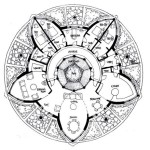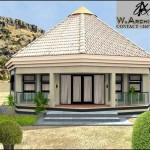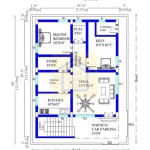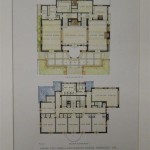High Cube Container Home Plans: Maximizing Space and Design
High cube containers, distinguished by their extra height compared to standard shipping containers, offer a compelling foundation for innovative and sustainable home construction. These containers, typically standing at 9.5 feet tall versus the standard 8.5 feet, provide that additional vertical space which opens up a world of possibilities in interior design, functionality, and overall living comfort. The increased volume allows for improved ventilation, more natural light penetration, and the potential for architectural features that would be impractical in standard height containers. This article explores the advantages, considerations, and planning aspects associated with high cube container home plans.
The growing popularity of container homes stems from their inherent structural integrity, portability, and potential for cost-effectiveness. High cube containers further enhance these benefits by addressing one of the primary limitations of standard containers: ceiling height. This extra foot may seem minor, but it significantly impacts the perceived spaciousness and livability of the home. Furthermore, the inherent modularity of shipping containers lends itself to flexible designs, allowing homeowners to create unique and personalized living spaces.
Before embarking on a high cube container home project, meticulous planning is crucial. This involves considering factors such as local building codes, site conditions, container acquisition, modification strategies, and interior design preferences. A well-defined plan not only ensures a smooth construction process but also maximizes the potential of these versatile structures.
Understanding the Advantages of High Cube Containers for Home Construction
The primary advantage of utilizing high cube containers lies in the enhanced vertical space they provide. This increased height contributes significantly to the overall comfort and aesthetic appeal of the home. With the extra foot of headroom, residents experience a more open and airy environment, mitigating the sometimes cramped feeling associated with standard container homes. This is especially important in areas with warmer climates where good ventilation is crucial. The higher ceiling also allows for incorporating features such as ceiling fans, recessed lighting, and even mezzanine levels or lofts, maximizing the usable square footage within the container.
Furthermore, the added height facilitates improved natural light penetration. Larger windows and strategically placed skylights can be incorporated more easily, flooding the interior with sunlight and reducing the need for artificial lighting during daylight hours. This not only contributes to a more pleasant living environment but also reduces energy consumption. The ability to install larger windows also enhances the views and connection to the surrounding landscape.
The increased interior volume afforded by high cube containers also allows for more flexibility in insulation strategies. Effective insulation is paramount in maintaining a comfortable indoor climate and reducing energy costs. The extra space allows for thicker insulation layers without significantly compromising the interior dimensions. This is particularly important in regions with extreme temperatures. Various insulation methods can be employed, including spray foam, rigid foam boards, and batt insulation, each offering different levels of thermal resistance and installation complexities.
Key Considerations for High Cube Container Home Plans
While high cube containers offer numerous advantages, several critical considerations must be addressed during the planning phase. These include structural modifications, insulation requirements, plumbing and electrical systems, and obtaining the necessary permits and approvals. Failure to address these issues adequately can lead to costly delays, structural problems, and potential code violations.
Structural modifications are often necessary to create openings for doors, windows, and to combine multiple containers into a larger living space. These modifications must be carefully engineered to maintain the container's structural integrity. Reinforcing the cut areas with steel beams or frames is essential to prevent warping or collapse. Consulting with a structural engineer is highly recommended to ensure that all modifications meet safety standards and building codes. The engineer can provide detailed drawings and calculations to guide the construction process.
Insulation is a crucial aspect of container home construction due to the inherent thermal conductivity of steel. Without proper insulation, container homes can become excessively hot in the summer and cold in the winter. Choosing the right insulation material and installation method is essential for maintaining a comfortable indoor climate and reducing energy consumption. Spray foam insulation is a popular choice due to its ability to create an airtight seal and fill irregular spaces. Rigid foam boards offer good thermal resistance and are relatively easy to install. Batt insulation is a more affordable option but may require more careful installation to avoid gaps and air leaks.
Integrating plumbing and electrical systems into a container home requires careful planning and execution. Running pipes and wires through the container walls can be challenging, and it is important to avoid compromising the structural integrity of the container. Wiring and plumbing should be installed in accordance with local building codes and should be protected from corrosion and damage. It is often advisable to create a service cavity within the walls to house these systems, providing easy access for maintenance and repairs.
Obtaining the necessary permits and approvals is a critical step in the container home construction process. Building codes and regulations vary widely depending on the location, and it is essential to research and comply with all applicable requirements. This may involve submitting detailed plans to the local building department and obtaining permits for structural modifications, electrical work, and plumbing installations. Failure to obtain the necessary permits can result in fines, stop-work orders, and even the demolition of the structure. Working with a qualified architect or contractor who is familiar with local building codes can help ensure that the project meets all regulatory requirements.
Designing and Customizing High Cube Container Homes
The modular nature of high cube containers allows for a wide range of design possibilities, enabling homeowners to create unique and personalized living spaces. Whether the goal is a minimalist studio apartment or a multi-level family home, containers can be combined and modified to achieve the desired aesthetic and functionality. The design process should consider factors such as the number of containers to be used, the orientation of the containers on the site, the placement of windows and doors, and the overall layout of the interior spaces.
One popular design approach is to combine multiple containers to create larger open-plan living areas. Removing sections of the container walls and reinforcing the structure with steel beams allows for seamless integration of the containers, creating spacious and airy rooms. This approach is particularly well-suited for creating living rooms, dining areas, and kitchens. The use of large windows and sliding doors can further enhance the sense of openness and connect the interior spaces with the surrounding landscape.
Interior design plays a crucial role in transforming a shipping container into a comfortable and stylish home. Careful consideration should be given to the choice of materials, colors, and furnishings to create a cohesive and inviting atmosphere. Light colors and reflective surfaces can help to maximize the sense of space and brightness. Multifunctional furniture and storage solutions can help to optimize the use of space, especially in smaller container homes. The use of natural materials, such as wood and stone, can add warmth and texture to the interior spaces.
Exterior design is equally important in creating a visually appealing and functional container home. The exterior of the container can be painted, clad with siding, or left in its original condition, depending on the desired aesthetic. Landscaping can be used to soften the industrial appearance of the containers and integrate the home into its surroundings. Decks, patios, and outdoor living areas can extend the living space and provide opportunities for outdoor recreation and relaxation. The use of sustainable materials and energy-efficient features can further enhance the environmental friendliness of the container home.
Sustainability can be integrated into high cube container home plans in various ways. Repurposing shipping containers is inherently a form of recycling, reducing the demand for new building materials. Sustainable materials can be used in the construction and finishing of the home, such as recycled wood, bamboo flooring, and low-VOC paints. Energy-efficient appliances, lighting, and insulation can reduce energy consumption and lower utility bills. Solar panels can be installed on the roof to generate renewable energy. Rainwater harvesting systems can be used to collect and store rainwater for irrigation and other non-potable uses.
The integration of smart home technology can further enhance the functionality and efficiency of a high cube container home. Smart thermostats can automatically adjust the temperature based on occupancy and weather conditions. Smart lighting systems can be programmed to turn on and off automatically or controlled remotely. Security systems can provide peace of mind and protect the home from intruders. Smart appliances can be monitored and controlled remotely, allowing homeowners to manage their energy consumption and reduce waste.
In conclusion, high cube container homes represent a compelling alternative to traditional housing, offering a combination of affordability, sustainability, and design flexibility. By carefully considering the advantages, challenges, and design possibilities, homeowners can create unique and personalized living spaces that are both functional and aesthetically pleasing. The increased height of high cube containers addresses a key limitation of standard containers, allowing for improved ventilation, more natural light, and greater design flexibility. With meticulous planning and careful execution, high cube container homes can provide a sustainable and comfortable living experience for years to come.

Container Home Plans Cmg Containers

Small Scale Homes 8x40 Container Home Design House Plans Cargo

Container Home Plans Cmg Containers

Off Grid Hc Container House Plans

40ft Container Home Plans Building A Sustainable Future

Container House

40ft Container House Floor Plans With 2 Bedrooms Home Designs

Off Grid Hc Container House Plans

Container Home Floor Plans Types Examples Considerations Cedreo

40 Container Home Plans Eagle Leasing








